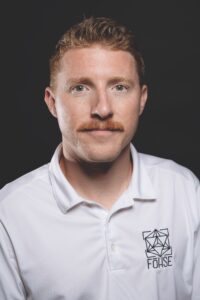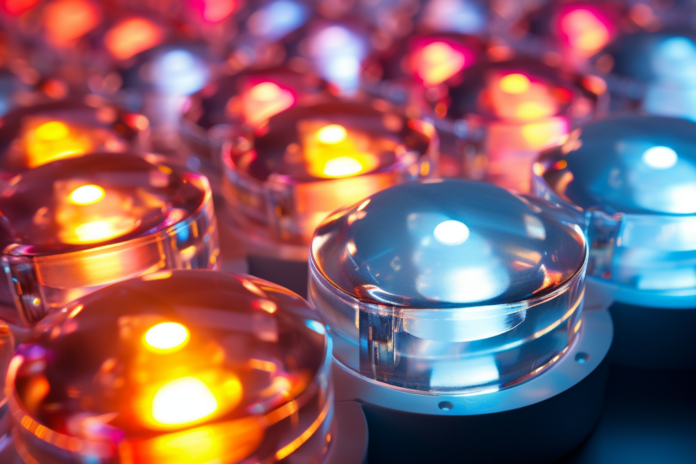In retrospect, it’s hard to believe there ever was a question about whether light-emitting-diode (LED) illumination is the future of commercial cultivation. Even three to four years ago, growers remained skeptical the newcomer technology could outperform the high-pressure sodium (HPS) lamps that have fueled indoor cultivation for decades.
In truth, it wasn’t until 2018 or so that LED technology finally turned the corner and became the obvious choice for commercial growers across the United States. Even today, there are HPS holdouts—mostly on the West Coast—who aren’t completely convinced of LEDs’ performance, environmental, and long-term cost benefits, but the data doesn’t lie. LED lights have proved to produce more light than HPS on a per-watt basis while creating less heat, and they also degrade at a slower rate and boast a much longer lifetime.
LED technology also allows cultivators to manipulate light spectrums at various stages of plant growth to influence cannabinoid and terpene production. In an industry becoming more fixated on crop-steering and relying on analytics to determine which strains to grow, LED technology has become a critical component of the equation.
As a leading LED manufacturer, Fohse has sold many tens of thousands of lights to growers around the world. The company’s lamps can be found in more than 700 indoor and greenhouse facilities across the U.S. and about twenty other countries. Founded in Las Vegas in 2015, Fohse recently was named among the twenty fastest-growing private companies in the U.S. by Inc. magazine. The Las Vegas Sun reported the company generated revenue of about $70 million in 2022, and Chief Executive Officer Brett Stevens said the figure soon could approach $200 million.
As chief technical officer, Alex Gerard leads the company’s engineering department, keeps abreast of new technologies, consults with growers, and works on new designs to keep the company’s customer base growing. Chief Horticulture Officer Mike Howard “dabbles in a little of everything” from sales and marketing to consulting with growers and facilities across the U.S. As a former commercial cultivator in Nevada, he was an early LED adopter and is intimately familiar with the issues growers confront on a daily basis.
Technology has played a major role in the success of commercial cultivation over the past five years. What matters most when cultivators evaluate lights?

Gerard: A lot of people who tried first-generation LEDs had pretty bad experiences. In the past, people said you couldn’t get the same yield with LEDs, and there was a lot of misinformation about quality as well. When companies like ours started coming along and doing research and development (R&D) the right way, we had to overcome this initial bad feedback.
It’s all based on a light’s ability to put down more energy more efficiently, which then produces more action within the plant. Good lights actually can increase yields quite significantly—20-, 30-, even 40-percent increases in yields are not unusual at all.
Today, the first thing people bring up is yield and maybe ease of use. Perception is pivoting and that’s really nice to see, because it tells me the word is out and people understand there’s a huge upside to using all the data.
Howard: In the past, people would always ask, “What distance should I run your fixture?” Or “at what intensity?” Those are always hard questions for us to answer, because we’re using light meters, we’re going by micrometer canopy. Now, I would say probably 75 percent of people or more are using light meters, and they’re looking for uniformity. They’re coming to the table with knowledge and answers already in hand.
And then people run these fixtures at different footprints, so there are different styles of growing. There are a lot of factors that go into how you’re going to grow your plants. I think the overarching theme of this is just consistency. If you have consistency with the light on your canopy, with your irrigation strategy, a consistent product comes out. I think a lot of growers are starting to figure that out now.
Do you still encounter misconceptions about LED lights, or is that all in the past now?
Gerard: Light levels still come up, but they used to come up on every call. Everyone would say “You can’t get more than about 900 or 1,000 PPFD.” [PPFD, or photosynthetic photon flux density, measures the amount of light that actually reaches the region that drives photosynthesis within plants. —Ed.] People were pretty firm that you couldn’t draw more than that.
So if we gave a quote to a customer with a light map and we were putting down 1,200 PPFD, or if we had a whitepaper that talked about yield per square foot, we would make note of the PPFD levels and people would be skeptical. It was a crazy argument, because you can walk outside with a PPFD meter and it’s 2,000 PPFD. So that was a huge misconception, and it still comes up here and there for people who are transitioning.
Some people used to call with a very stubborn [anti-LED] outlook, but that doesn’t seem to happen anymore. For the most part, people have common sense, and a lot of what we do to educate them is content-based. We’re not ever trying to argue with people. We just show them different studies or points of view, and they catch on pretty quickly.
What are some of the biggest technological breakthroughs that have made LEDs the industry standard?
Gerard: I would say if you’re looking at the best components we had five years ago and the best components we have today, there’s maybe a 15-percent improvement in efficiency, but nothing that would completely change your outcome. It would change your electrical bill, but we had the same ability five years ago to make the spectrums we do now.
Manufacturers had to figure out what the cultivators needed, how the facilities are built, and what the plants need. We started coming up with different optics to improve what the diodes were actually emitting, and we developed different manufacturing processes to increase reliability. Electrical components like power supplies are now better and more efficient and more reliable.
As with any new market, there are a lot of components you can choose from. There was an industry-wide vetting process, and there are still a lot of crappy [lights] out there, but there are some companies that are doing it right. We have thoroughly vetted thousands and thousands of components to come up with a very reliable network of component suppliers.
Did you anticipate indoor flower would become so dominant in retail markets, and do you think that trend will continue? Or do you think hybrid greenhouse facilities will become more common?

Howard: I think a lot of that answer depends on legislation. Everyone has their finger on the pulse to see where things are going. Until [legalization] goes federal, I don’t think we’re going to see a big greenhouse jump.
But once [federal prohibition ends], price compression is going to be extremely fast. There will be some places where you can grow outdoors—in most of California and the Pacific Northwest, for example—and get really good results, especially with greenhouses that provide controlled environments. I think a lot of [the smokable flower market] is going to be dominated by greenhouses. And good, top-shelf flower will come from those types of setups.
I think a lot of outdoor spaces will be used for extractions and edibles and things like that [instead of smoking], just because the price [of outdoor flower] is going to be hard to compete with.
How much of your business is indoor versus greenhouse these days?
Gerard: We still have a lot of greenhouse clients, and that seems to be growing in some ways, but I don’t know how many of those are actually new builds. It’s more like legacy retrofits. There are certainly a lot of greenhouses out there. I would say it probably makes up 20 percent or so of our sales. We look at vertical and indoor as separate, and then there is greenhouse—so we kind of view things in three categories.
We have single-tier, high-bay lights that service people who are just growing on rolling benches in one layer. And then we have a few other models that are purpose-built and go into vertical racks where you have multiple tiers.
What growing pains have you seen from farmers who have used HPS for years and now are moving to LED?
Howard: A lot of people who have been growing under HPS have been killing it for twenty years, so it’s hard to fathom trying to deviate from that plan and change subtle things. Some people understand [how to make the switch] right off the bat. When Alex and I are on some of these calls, we have to explain why [clients] need to make some changes, like where they place their lights in relation to the plants. Typically, growers are adjusting temperature because they are not getting as much radiant heat as they did with HPS, so they think something’s wrong. They’re used to racking the lights higher, but they can rack LEDs closer to the plants because they run cooler. We explain the difference to growers and they understand it, and then they’ll adjust. So as we help people make that switch, we explain those changes and it usually clicks pretty fast.
When you talk to growers in different parts of the country, have you noticed any differences in growing styles from region to region?
Howard: When they first legalize, a lot of these states will have investors who have money to spend and build out facilities with what they deem to be the best technology at that time. I think in a lot of the newer states, you see people adopting LEDs right off the bat. You see them going straight into crop-steering and newer growing styles. Twenty years from now, cannabis cultivation might look very similar to other agricultural products, where there’s an industry standard and people don’t deviate too much from it.
You recently introduced lights for home growers. How large is that market now, and how much do you expect it to grow?
Gerard: I think it’s pretty big. What we’ve seen with states that pass new legislation is it creates this environment where there’s a surge in people who want to get into [cultivation] on a hobby level at home. And that’s awesome, because it builds this awareness and just really gets people into [growing cannabis]. When [federal legalization] passes, some of them will stop growing for one reason or another, but a lot of them will continue, because it’s a very rewarding hobby. So I don’t think that market will ever go away.
Howard: I really think [home growing] is about to blossom, and what we saw happen in Germany is one of the best examples. With the open borders, people could buy cannabis in Germany and then move it across different countries within the [European Union]. That wasn’t really palatable in many places in the EU right now, but they still allow home growing. So there’s already a destigmatization over there, which is similar to what we saw in a lot of states when medical patients were pushing to expand access. I think we’re about to see a huge explosion [in legalization] take place in Europe. It’s a powder keg that’s just about to ignite.
What advances in lighting technology do you see on the horizon?
Gerard: Well, it’s interesting with the diodes themselves and the chemical composition we currently utilize. We are slowly approaching the physical capacity of efficiency on those. There might be a new design that comes out, and there’s always stuff going on in R&D labs that would further advance the efficiency capabilities, but with the tools we have on the shelf right now, the improvements will be smaller and smaller from year to year.
The big improvements will be in the designs and controllability. I do think there is a growing market for more spectrum tunability. I don’t think we’re quite there yet, but in the next two to four years I think that will be a pretty large chunk of the market. And then it’s just finding a way to improve manufacturing processes and uniformity within the canopy and improve penetration.
Howard: Cultivators are looking for the science to catch up. A lot of people already are seeing how [ultraviolet] and other light spectrums affect the plant. As we study the data more and more, we’ll be able to figure out where they fit in for various growth stages, in nurseries, and other aspects of cultivation.
I think we’re kind of at a peak point right now, and things might stagnate a little bit because we’ve made so many advancements in the past five years. Right now, things are kind of standardizing, if you will, but I’m sure there will be more advancements and more cool things as we are able to tweak these spectrums and really change things up.










[…] your grow room up to date with the latest technologies and systems provides quite a few benefits to cultivation operations, and those benefits will […]